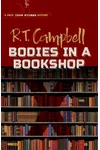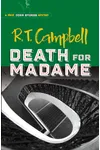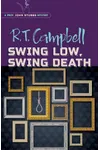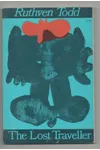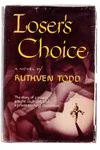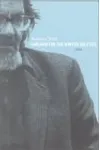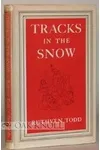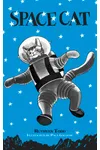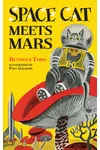Picture a Scottish polymath weaving tales of quirky detectives, cosmic cats, and William Blake’s visionary art—meet Ruthven Todd, better known to mystery fans as R.T. Campbell! Born in Edinburgh in 1914, Todd’s eclectic career spanned poetry, children’s books, and scholarly work, all infused with a bohemian spirit that took him from London’s artsy circles to a Spanish mountain village. His life was as colorful as his stories, blending wit, rebellion, and a passion for the written word.
Under the pseudonym R.T. Campbell, Todd crafted the beloved Professor John Stubbs series, while his ‘Space Cat’ books delighted young readers with interstellar feline adventures. His expertise on William Blake cemented his literary legacy, making him a fascinating figure whose work continues to charm and intrigue.
The Making of Ruthven Todd
Ruthven Campbell Todd was born on June 14, 1914, the eldest of ten children of a prominent architect in Edinburgh. Educated at Fettes College and Edinburgh College of Art, Todd’s rebellious streak emerged early. He ditched art school after a bout of heavy drinking, landing on the Isle of Mull as an agricultural laborer to ‘dry out.’ This unconventional start shaped his free-spirited approach to life and writing. By the 1930s, Todd dove into London’s literary scene, rubbing elbows with Dylan Thomas, Wyndham Lewis, and Salvador Dalí, whose surrealist influence seeped into his poetic and prose experiments.
Ruthven Todd’s Unforgettable Stories
As R.T. Campbell, Todd penned a series of detective novels in the 1940s featuring Professor John Stubbs, a beer-guzzling, pipe-smoking botanist-turned-sleuth. Titles like Unholy Dying (1945) and Bodies in a Bookshop (1946) brim with witty dialogue, droll characters, and intricate plots set in London’s bookish underworld. Critics praise their playful nod to Golden Age mysteries, with Stubbs’ larger-than-life persona echoing G.K. Chesterton and John Dickson Carr’s eccentric detectives.
Todd’s Space Cat series, starting with Space Cat (1952), showcased his whimsical side. Following Flyball, a cat stowaway on interstellar missions, these charmingly illustrated books captured the 1950s fascination with space exploration. His poetry, like Garland for the Winter Solstice (1961), blended precise imagery with a melancholic awareness of war-torn Europe, while his scholarly work, including William Blake: The Artist (1971), offered meticulous insights into Blake’s techniques.
Todd’s style was versatile yet distinct, marked by sharp wit, vivid settings, and a knack for blending highbrow and populist appeal. His novels Over the Mountain (1939) and The Lost Traveller (1943) explored allegorical journeys, reflecting his surrealist roots and political anxieties about fascism and war.
Why Ruthven Todd Matters
Todd’s impact lies in his ability to bridge genres and cultures. His Professor Stubbs mysteries, though overshadowed by contemporaries, remain cult favorites for their humor and bibliophile charm, recently revived by publishers like Dover. The ‘Space Cat’ series inspired young readers to dream of the stars, while his Blake scholarship influenced generations of academics. Todd’s bohemian life—marked by friendships with literary giants and a conscientious objection during World War II—embodied a restless creativity that resonated across continents.
His later years in Galilea, Mallorca, where he died in 1978 from emphysema, reflected a quieter but no less vibrant legacy. Todd’s work endures as a testament to the power of a fervent mind, weaving stories that spark joy and curiosity.
- Born: June 14, 1914, Edinburgh, Scotland
- Key Works: Unholy Dying, Bodies in a Bookshop, Space Cat, William Blake: The Artist
- Died: October 11, 1978, Galilea, Mallorca
Snag Bodies in a Bookshop or Space Cat and dive into Ruthven Todd’s quirky, captivating world!

